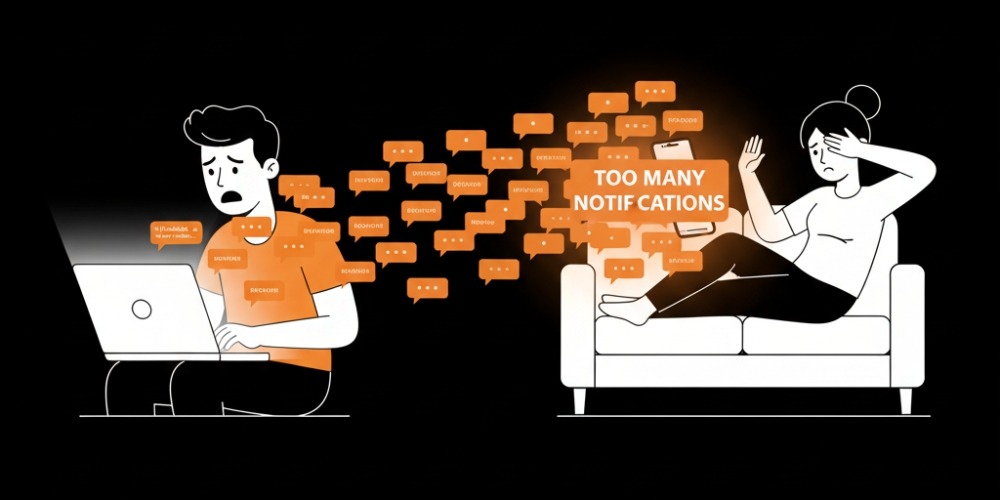How to Source Passive Candidates Without Being Pushy

TL;DR
- Passive talent makes up a huge share of the workforce.
- Sourcing passive candidates takes finesse, not force.
- Relationship building > cold outreach.
- Use tech and data wisely to support your human touch.
- Measure with engagement metrics (not just replies).
You don’t often win talent by blasting job ads and hoping a perfect fit appears. That’s why knowing how to source passive candidates matters. In many industries, top performers aren’t actively applying. They’re settled, delivering value and not browsing job boards.
In this blog, you will learn about a recruiting path that doesn’t feel like selling. You’ll learn sourcing passive candidates strategies, how to approach without pressure, and tools you can use so the candidate feels invited, not hunted.
Who Exactly Are Passive Candidates and Why Do They Matter?

When I say passive candidates, I mean people who are not actively applying for roles, yet might consider a new opportunity under the right conditions. They are stable in their roles, often high-performing, and selective about changing jobs. Their passive candidate meaning: they’re open but not looking.
Why should you care? Because roughly 70% of the global workforce falls into this passive category. Also, many recruiters say 73% of candidates are passive job seekers. If you limit yourself to active applicants, you miss a massive talent pool.
Moreover, passive talent often comes with experience, strong reputations, and fewer interview “churns.” Recruiting passive candidates gives you a stronger bench, better quality hires, and more control over your pipeline.
And when your competition is fishing in the same shallow pond of active seekers, your differentiator becomes your ability to attract and engage the hidden talent.
Who Exactly Are Passive Candidates and Why Do They Matter?
Drag the slider to guess what percent of the workforce are passive candidates.
Why Do Recruiters Risk Seeming Pushy With Passive Candidates?

Because sourcing passive candidates is hard work. Here’s what often goes wrong:
Desperation in the message
When roles are urgent, some recruiters spray generic messages everywhere. That feels like spam to passive folks.
Too much too fast
They jump in with an offer, salary, and long job spec, all before trust is built. That’s like asking someone to marry you on a first date.
Poor research
They send irrelevant messages that reveal they didn’t even read the candidate’s background. That’s rude.
Using only one medium
They push via email or LinkedIn only, without meeting the candidate where they are (forums, newsletters, communities).
Pressure tactics
“Limited slots,” “deadline tomorrow,” etc. That makes even interested people recoil.
The result: passive candidates either ignore you, ghost you, or report you as spam. And your brand suffers.
What’s the Right Way to Approach Passive Candidates?

If you want to avoid being pushy, use these principles:
Start with humility
Instead of “I have a job for you,” try “I was impressed by your work on X. Would you be open to a conversation about what you want next?”
Personalize deeply
Do more than mention their company. Tie something that shows you researched them, a past project, shared interest, or a mutual contact. This is how to engage passive candidates and make them real.
Lead with value
Send them something useful before asking for anything, such as industry insight, a report, or a peer connection. Make your outreach helpful first.
Ask, don’t push
Use open-ended questions: “What part of your work do you want more of?” rather than “Do you want this job?”
Respect timing and follow-up
If they say “not now,” flag it and circle back in months. Gentle follow-up beats daily spam.
Mix soft channels
Emails, DMs, content engagement, mix formats so your presence feels natural, not invasive.
By treating passive candidates like people, not commodities, you shift from recruiting passive candidates to building respect and genuine interest.
How Can Recruiters Build Relationships Instead of Transactions?

The best recruiters treat people like people, not “placements.” Relationship-based recruiting takes time, but it builds trust, referrals, and brand equity. Passive candidates don’t respond to one-and-done pitches; they respond to connection.
Start by offering insight, not opportunities. Share useful content, comment on their posts, invite them to webinars, or send thoughtful updates about their industry. This is how you turn a candidate attraction strategy into a meaningful conversation.
Once interest grows, don’t immediately drop a job link. Keep the tone collaborative. Ask questions like, “What kind of projects excite you most these days?” or “What would make you consider something new?” Small talk with purpose feels natural and opens doors.
How Can Recruiters Build Relationships Instead of Transactions?
Click each stage to reveal a quick tip. Progress fills as you move from left to right.
Follow their work first. Save notable projects and note what they care about. No pitch yet.
What Channels Work Best for Reaching Passive Candidates?

If you want to source passive candidates effectively, meet them where they already spend time, not where you wish they were. Here’s where top recruiters quietly win:
- Professional communities – Industry Slack groups, subreddits, or niche Discord servers are hotbeds of discussion. Join, listen, contribute, not sell.
- Podcasts and newsletters – Sponsoring or guesting on niche industry shows puts your company in front of passive audiences who trust the host.
- Events and webinars – Hybrid or online meetups build credibility and signal expertise, which helps when attracting passive candidates later.
- Employee advocacy – Your team’s social content often travels further than brand pages. Internal voices attract peers organically.
What Tools and Data Can Help Without Making It Cold?

Technology can make passive recruiting smarter, but only when used with empathy. Automation can’t replace rapport; it should only enhance it.
AI now scans open-web signals to identify passive talent, such as GitHub commits, Medium posts, or conference speaker lists. Tools such as SeekOut and HireEZ use AI for passive candidate sourcing, helping recruiters identify prospects beyond job boards.
But here’s the trick: don’t let automation write your outreach. Use it to research patterns, then personalize manually. AI should serve as your digital scout, not your spokesperson.
Data also improves timing. Combine those insights with genuine curiosity, and you’ll never sound robotic.
Modern CRM tools now flag when engagement drops, so you can re-engage gracefully rather than spam your list. When done right, data simply helps you sound more human.
What Tools and Data Can Help Without Making It Cold?
Which outreach feels more human? Pick one to reveal why. Use black–orange–white theme, no white background.
Round 1
Hi Sam, your talk on data quality last quarter was sharp. If you’ve got ten minutes next week, I’d love to hear what kind of problems you enjoy solving.
Greetings, I noticed your expertise and have an exciting role. Send your CV and availability so we can proceed with the recruitment process.
How Can Recruiters Measure Success Without Chasing Every Candidate?

Tracking progress in sourcing isn’t simple since results don’t show up overnight. It’s more about planting seeds than picking fruit. Still, a smart recruiter keeps score.
Skip the flashy numbers like “messages sent” and pay attention to things that actually show progress, such as:
- Response rate – Are people replying or ghosting?
- Engagement depth – How many passive conversations convert into interviews within 3–6 months?
- Source quality – Which channel brings the best hires, not the most leads?
- Time to interest – How long before a candidate shows curiosity, not commitment?
These show whether your sourcing passive candidates strategies actually build trust. Over time, patterns emerge, such as whether your personalized emails outperform cold InMails or whether webinars generate warmer leads than ads.
How Can Recruiters Measure Success Without Chasing Every Candidate?
Enter your weekly numbers. We’ll auto-calc engagement and show a quick mood indicator.
Conclusion
Building a network of passive candidates is a long game. You don’t chase; you nurture. You don’t pitch; you connect. With clear messaging, consistent presence, and smart use of tools, you’ll turn quiet observers into future teammates.
The art of sourcing is not about finding everyone. It’s about earning the trust of the right few. Start slow, stay human, and the results will compound.
FAQs
Click a question to reveal the answer.
Talent mapping is a strategic process where recruiters analyze future workforce needs, identify potential skill gaps and track promising professionals in advance. It helps companies maintain a living database of qualified individuals before roles even open.
The return lies in reduced time-to-hire and lower recruitment costs. By tracking top prospects early, recruiters shorten search cycles and fill roles faster, keeping productivity steady even when hiring demand spikes.
Personalization wins almost every time. Passive professionals value relevance, recognition and respect more than perks. Show that you understand their career journey and your outreach will stand out naturally.






